Chapter 10 PDF

| Title | Chapter 10 |
|---|---|
| Course | Physiological Chemistry II |
| Institution | University of Massachusetts Lowell |
| Pages | 10 |
| File Size | 822.3 KB |
| File Type | |
| Total Downloads | 83 |
| Total Views | 182 |
Summary
These are detailed lecture notes for chapter 10 from physiological chemistry II....
Description
Chapter 10: Things You Need to Know for the Exam *Quiz 4* Helpful Links ➔ Types of Isomers: Constitutional Isomers, Stereoisomers, Enantiomers, and Diastereomers: https://www.masterorganicchemistry.com/2018/09/10/types-of-isomers/
1.) Know the structural requirements for chirality and achirality, as well as how to identify compounds that are chiral versus achiral, including the structural characteristics that lead to meso compounds ● An asymmetric object, which cannot be identical to its mirror image, is said to be chiral (pronounced ‘ky-rull’)
●
An object that has a plane of symmetry is identical to its mirror image and is achiral ○ Achiral objects cannot have an enantiomer because they are identical (i.e., superimposable) to their mirror image
●
Chirality most commonly arises when an atom with tetrahedral electron group geometry is bonded to FOUR different structures ○ These atoms are called a chiral center or chirality center ■ A molecule having one and only one chiral center MUST be chiral
●
Meso structures - the presence of chiral elements in a molecule or object does NOT guarantee its chirality because the molecule or object may still have symmetry as a whole ○ SAME MOLECULE; NOT an enantiomer
2.) Know how to identify and distinguish, constitutional isomers, enantiomers, and diastereomers, including epimers, as well as compounds that are NOT isomers of each other, if given examples
Stereochemistry Stereoisomers
Isomers that have identical order of connectivity of atoms, but they differ in their spatial (i.e., three-dimensional) orientation ● Types of stereoisomers: enantiomers and diastereomers
Constitutional Isomers Isomers that have the same molecular formula, but different connectivities; have same empirical formulae but their core IUPAC names are different
Enantiomers
Stereoisomers that are non-superimposable (non-identical) mirror images of each other; they cannot be superimposed on top of one another ● Are variants of the same compounds that have nearly identical chemical and physical properties ● Lack a plane of symmetry ● Since they are mirror images, they must exist in pairs ○ Any asymmetric object can have one and only ONE enantiomer
Diastereomers
Aka geometric isomers; arise when groups bonded to distinct atoms are constrained to different relative spatial orientations via restricted rotations
●
When two groups are oriented toward the same side of the axis joining the bonded atoms, they are in a cis relative orientation ● Alternatively, when two groups are oriented toward the opposite side of the axis joining the bonded atoms, they are in a trans relative orientation In general, with molecules having multiple chirality centers ● Diastereomers arise when at least ONE but NOT ALL of the chirality centers in a molecule have a different configuration ● When ALL chirality centers in a chiral molecule exhibit a change in the relative arrangement of its groups, its enantiomer results
Epimers
Chiral diastereomers that differ in ONLY ONE chiral center are called epimers
3.) Know how to determine the number of chiral centers in a structure and the number of possible stereoisomers that can arise ● When a molecule has ‘n’ chirality centers , it can exist as up to 2^n structurally different asymmetric stereoisomers ○
They will exist as ½ × 2^n pairs of enantiomers ■ When meso stereoisomers exist, the number of stereoisomers is less than 2n, because the meso compounds do not have an enantiomer...
Similar Free PDFs

Chapter 10 quiz #10
- 3 Pages

Notes 10 - Chapter 10
- 5 Pages
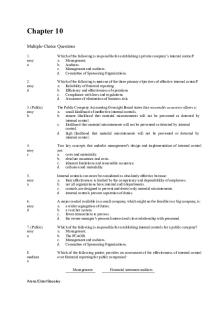
Chapter-10
- 19 Pages
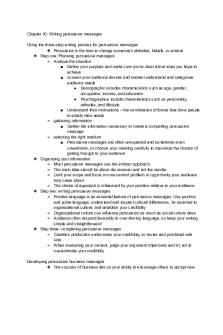
Chapter 10
- 5 Pages
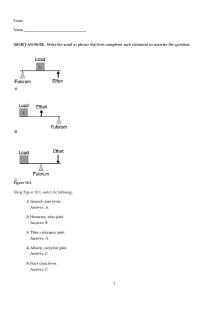
Chapter 10
- 14 Pages

Chapter 10
- 111 Pages
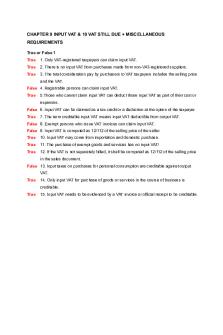
Chapter 10
- 16 Pages
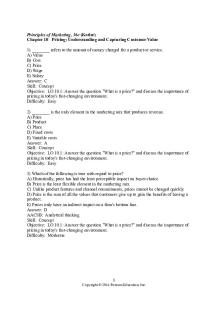
Chapter 10
- 47 Pages
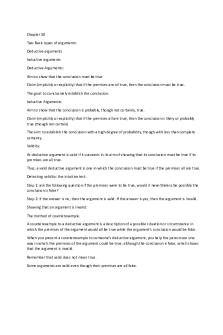
Chapter 10
- 4 Pages
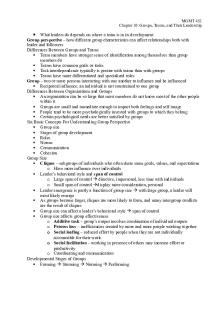
Chapter 10
- 5 Pages
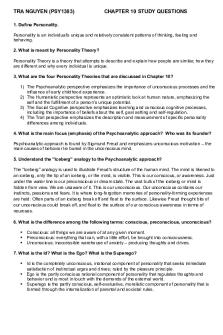
Chapter 10
- 6 Pages

Chapter 10
- 13 Pages

Chapter 10
- 10 Pages

Chapter 10
- 3 Pages

Chapter 10
- 22 Pages
Popular Institutions
- Tinajero National High School - Annex
- Politeknik Caltex Riau
- Yokohama City University
- SGT University
- University of Al-Qadisiyah
- Divine Word College of Vigan
- Techniek College Rotterdam
- Universidade de Santiago
- Universiti Teknologi MARA Cawangan Johor Kampus Pasir Gudang
- Poltekkes Kemenkes Yogyakarta
- Baguio City National High School
- Colegio san marcos
- preparatoria uno
- Centro de Bachillerato Tecnológico Industrial y de Servicios No. 107
- Dalian Maritime University
- Quang Trung Secondary School
- Colegio Tecnológico en Informática
- Corporación Regional de Educación Superior
- Grupo CEDVA
- Dar Al Uloom University
- Centro de Estudios Preuniversitarios de la Universidad Nacional de Ingeniería
- 上智大学
- Aakash International School, Nuna Majara
- San Felipe Neri Catholic School
- Kang Chiao International School - New Taipei City
- Misamis Occidental National High School
- Institución Educativa Escuela Normal Juan Ladrilleros
- Kolehiyo ng Pantukan
- Batanes State College
- Instituto Continental
- Sekolah Menengah Kejuruan Kesehatan Kaltara (Tarakan)
- Colegio de La Inmaculada Concepcion - Cebu
